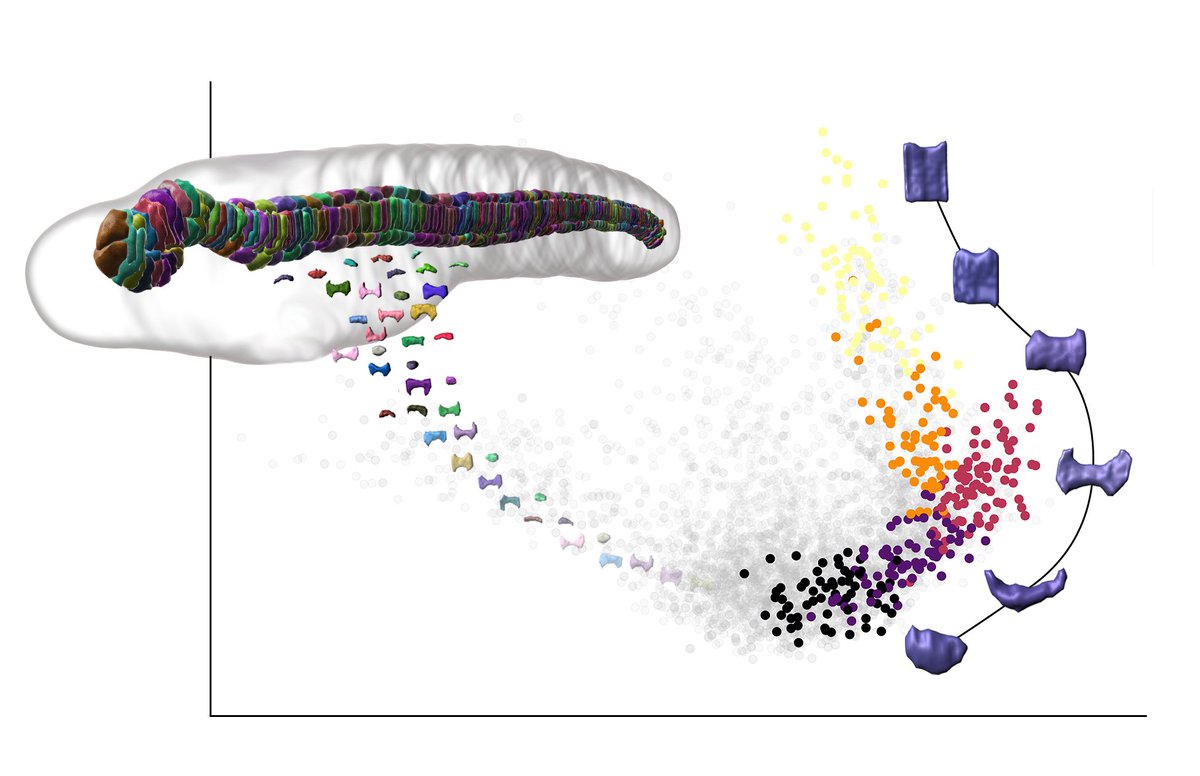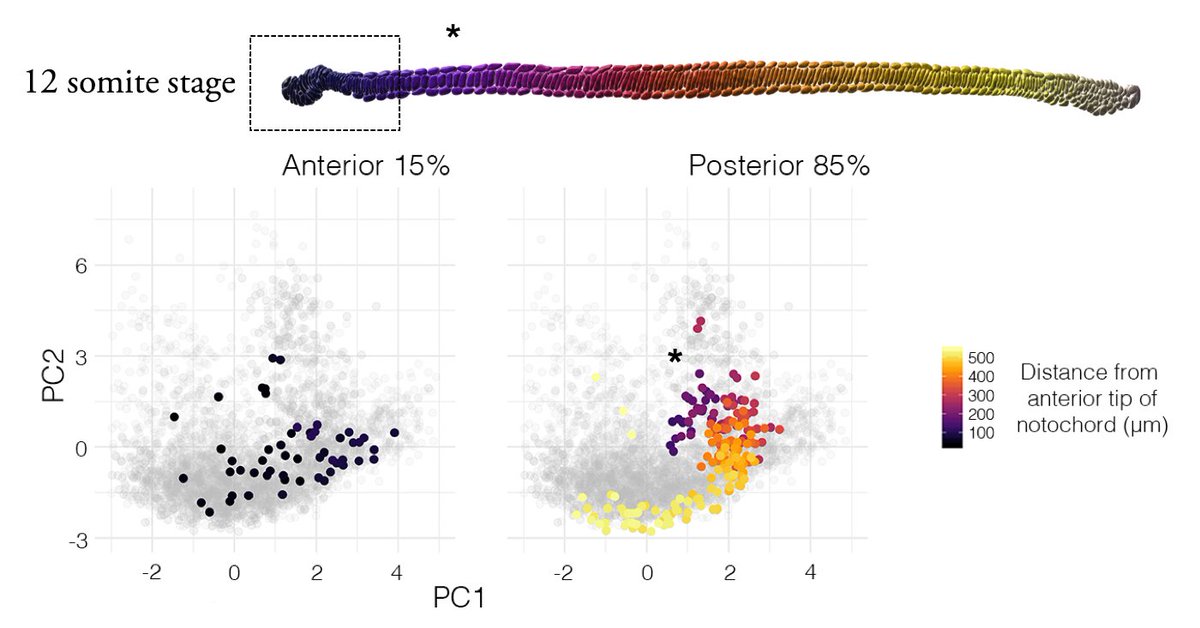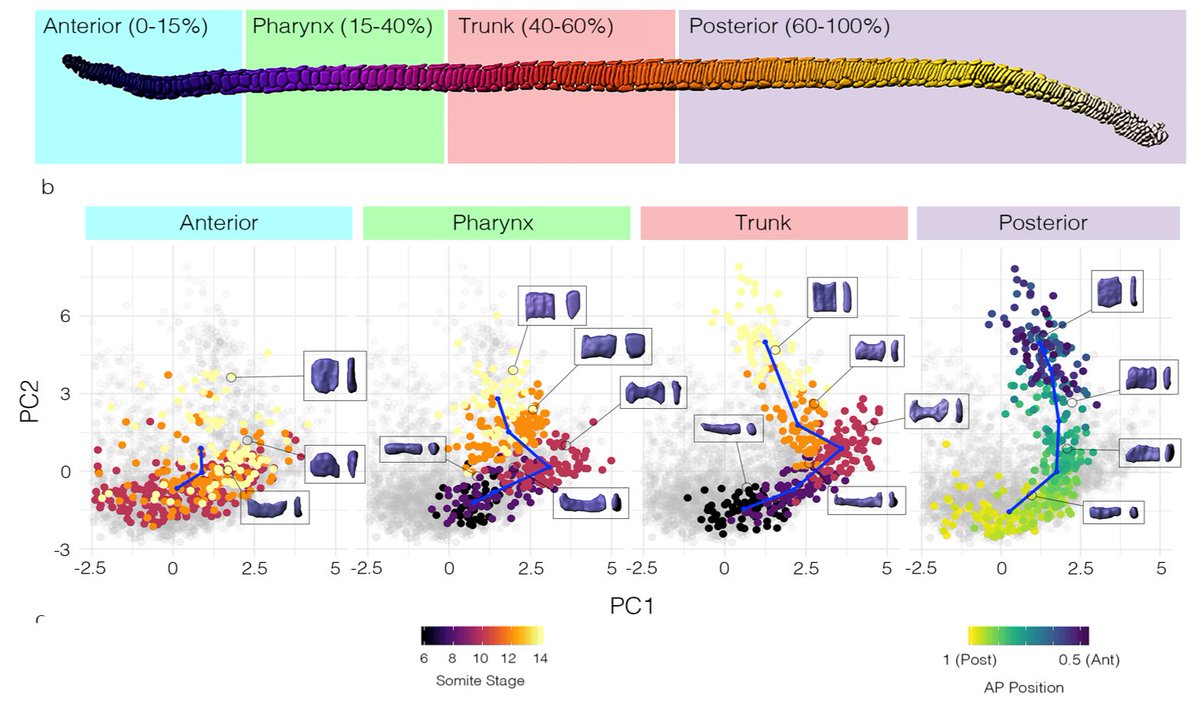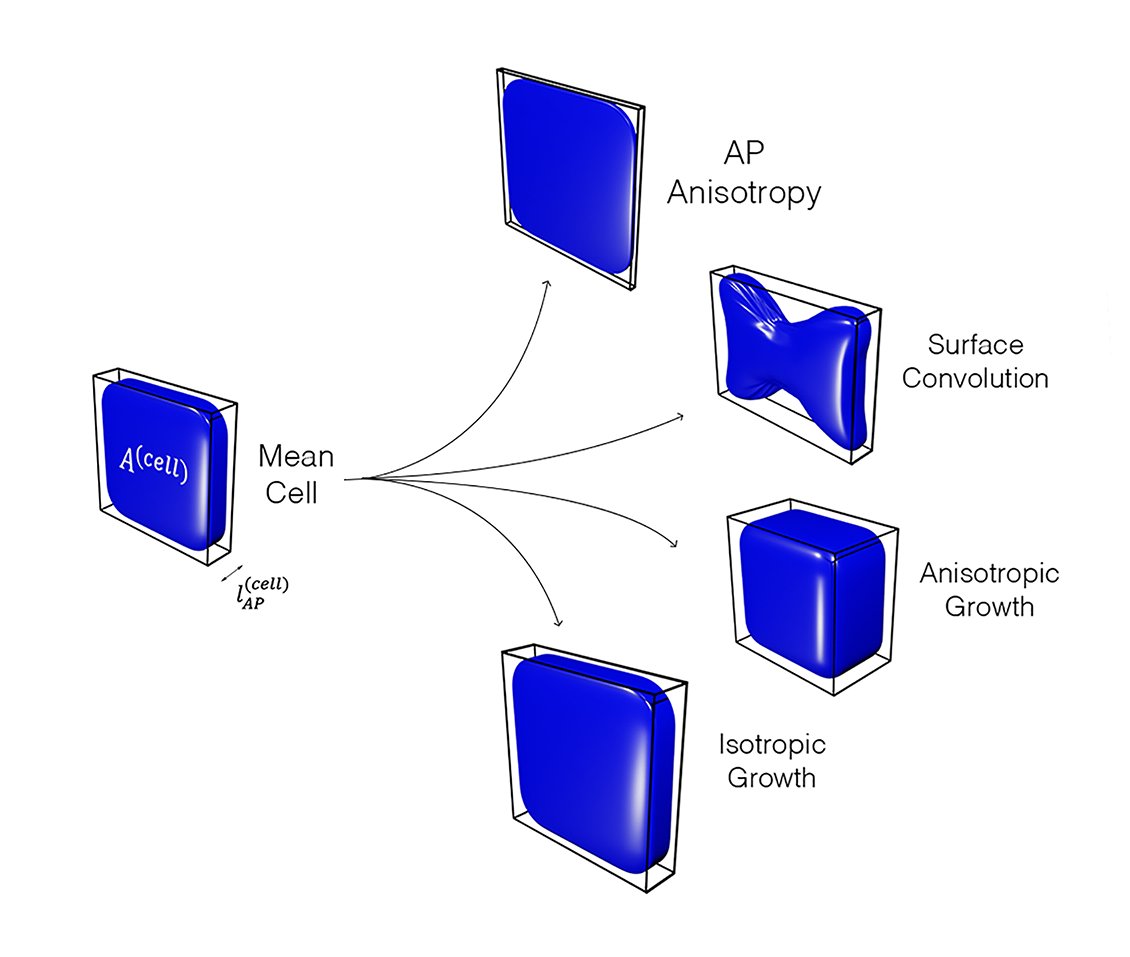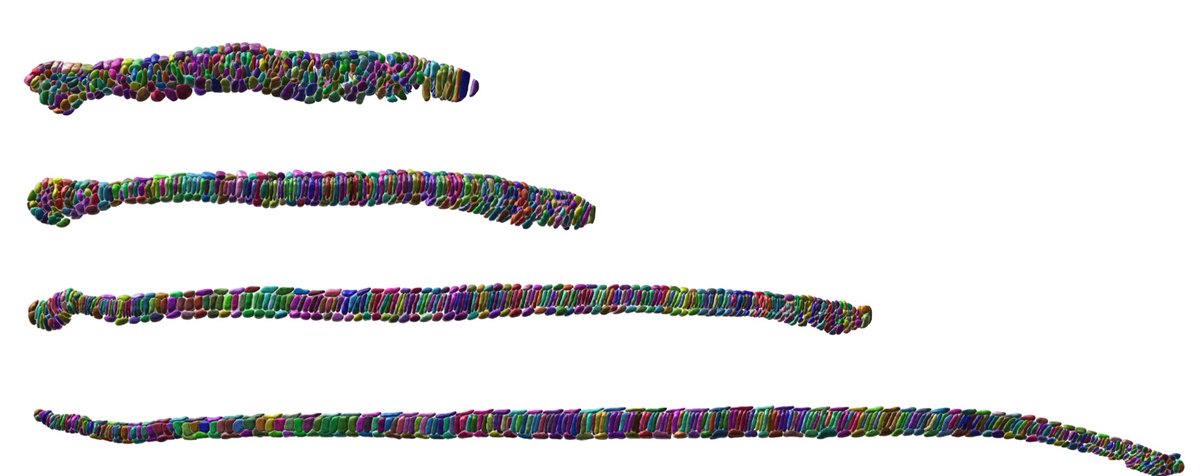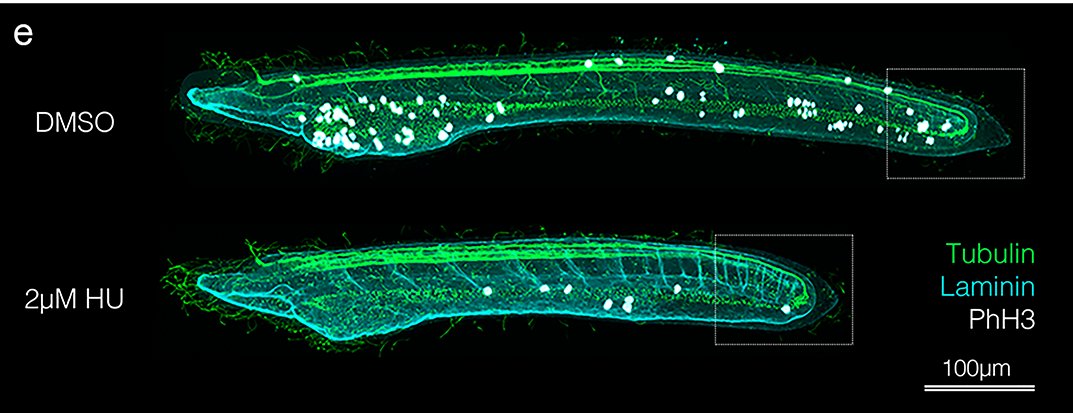Excited to share this first section of my PhD work, and first preprint!
We use single-cell morphometrics in the amphioxus to define ancestral principles of notochord development #singlecell #morphospace #evodevo
Stay tuned for tweetorial https://bit.ly/2BWzdS6 ">https://bit.ly/2BWzdS6&q...
We use single-cell morphometrics in the amphioxus to define ancestral principles of notochord development #singlecell #morphospace #evodevo
Stay tuned for tweetorial https://bit.ly/2BWzdS6 ">https://bit.ly/2BWzdS6&q...
The notochord is a major innovation of chordates, but we know little of how it was put together in the first chordates. We can reconstruct these dynamics using the amphioxus, a basally-branching member of the phylum. It’s also very small, transparent, and easy to image... (1/10)
To unravel notochord morphogenesis, we developed a single-cell morphometrics pipeline to catalogue the morphologies of thousands of notochord cells, and to project them simultaneously into a common mathematical space termed morphospace. (2/10)
In morphospace, cells organise into branching trajectories of shape differentiation, remodelling a common progenitor morphology into a diversity of terminal forms. The trajectory shown here is for the highly conserved central layer of notochord cells (3/10)
By spatially mapping cells, we find the most advanced along each trajectory to lie in the pharyngeal region, while the more anterior and posterior are less advanced. In sum, we find bidirectional temporal gradients of shape cell change across the AP axis (4/10)
We also find spatial variation in trajectory structure. Some trajectories branch to generate a diversity of morphologies, while others converge on common forms through divergent routes (5/10)
Through geometric simulations applied to mean notochord cells, we infer that cell length is controlled by a balance between the negative effect of cell spreading behaviour linked to intercalation, and the positive effect of cell growth (6/10)
In cell neighbourhoods, this predicts that cell intercalation alone is unable to generate tissue length. Instead, cell growth is required to counteract the loss of cell length during intercalation, and further increase whole notochord length after cell rearrangement (7/10)
Finally, we show that the rate of elongation at the tissue-scale exceeds that at the cell neighbourhood level – something is missing.
We find that cell division in posterior progenitors is required to accelerate elongation by providing new cells to each shape trajectory (8/10)
We find that cell division in posterior progenitors is required to accelerate elongation by providing new cells to each shape trajectory (8/10)
The approach we present offers a new way of seeing for studying tissue morphogenesis  https://abs.twimg.com/emoji/v2/... draggable="false" alt="👀" title="Augen" aria-label="Emoji: Augen"> It enables holistic analysis of cell behaviours that define tissue geometry, and lends itself to rigorous cross-species comparisons we hope to be exploited in future studies (9/10)
https://abs.twimg.com/emoji/v2/... draggable="false" alt="👀" title="Augen" aria-label="Emoji: Augen"> It enables holistic analysis of cell behaviours that define tissue geometry, and lends itself to rigorous cross-species comparisons we hope to be exploited in future studies (9/10)
Here, we use it to uncover a complex set of morphogenetic processes ancestral to notochord formation. We propose that evolution has acted on the magnitude of these existing processes in the first chordates, to generate the diversity of dev dynamics found in vertebrates (10/10)
Many thanks to @CamZoology, @WolframPonisch @PaluchLab and @SteventonLab for this exciting collaboration, and @TransmitScience for inspiring me with morphometrics
Please ask away with any questions!
Please ask away with any questions!

 Read on Twitter
Read on Twitter